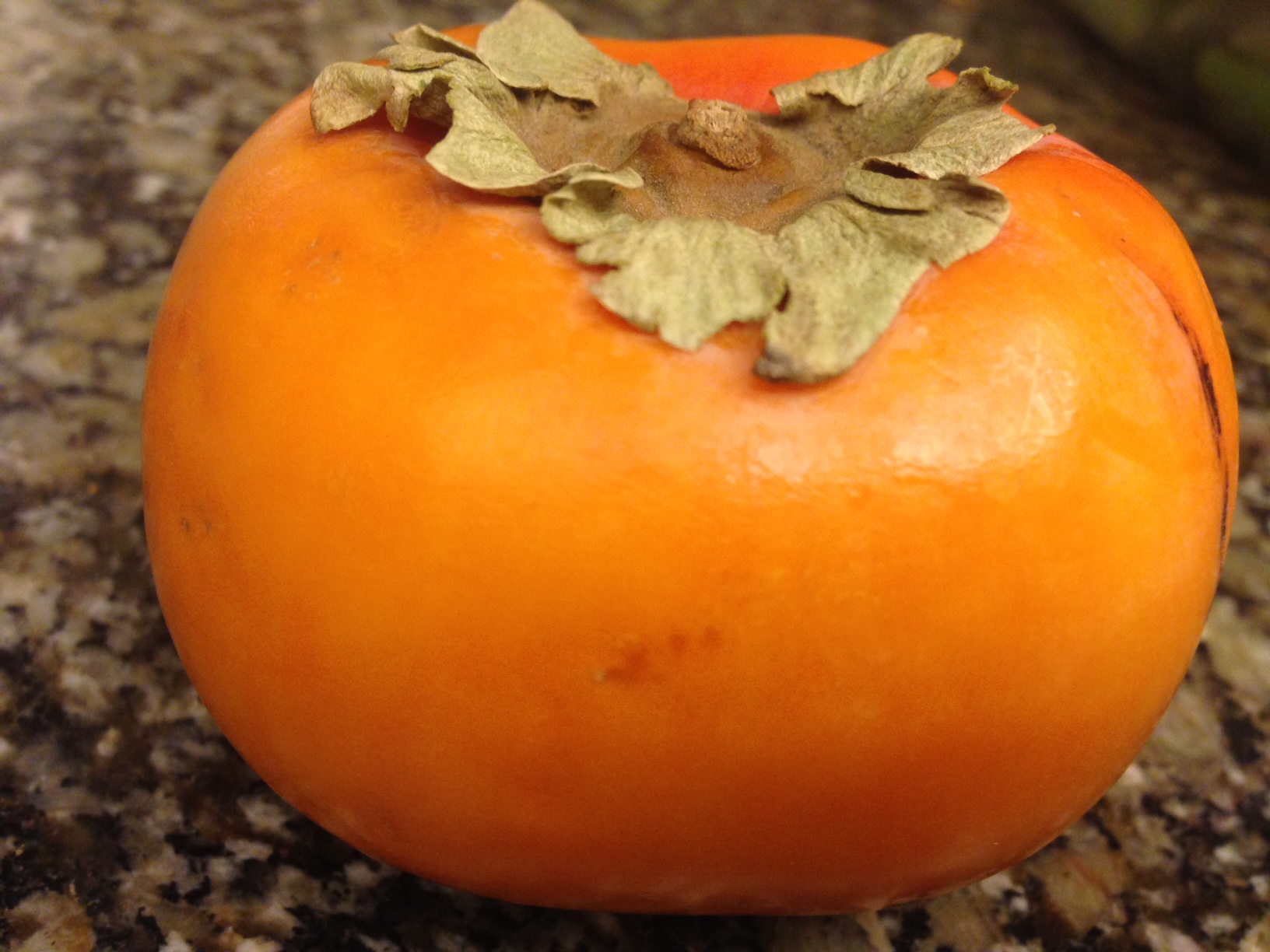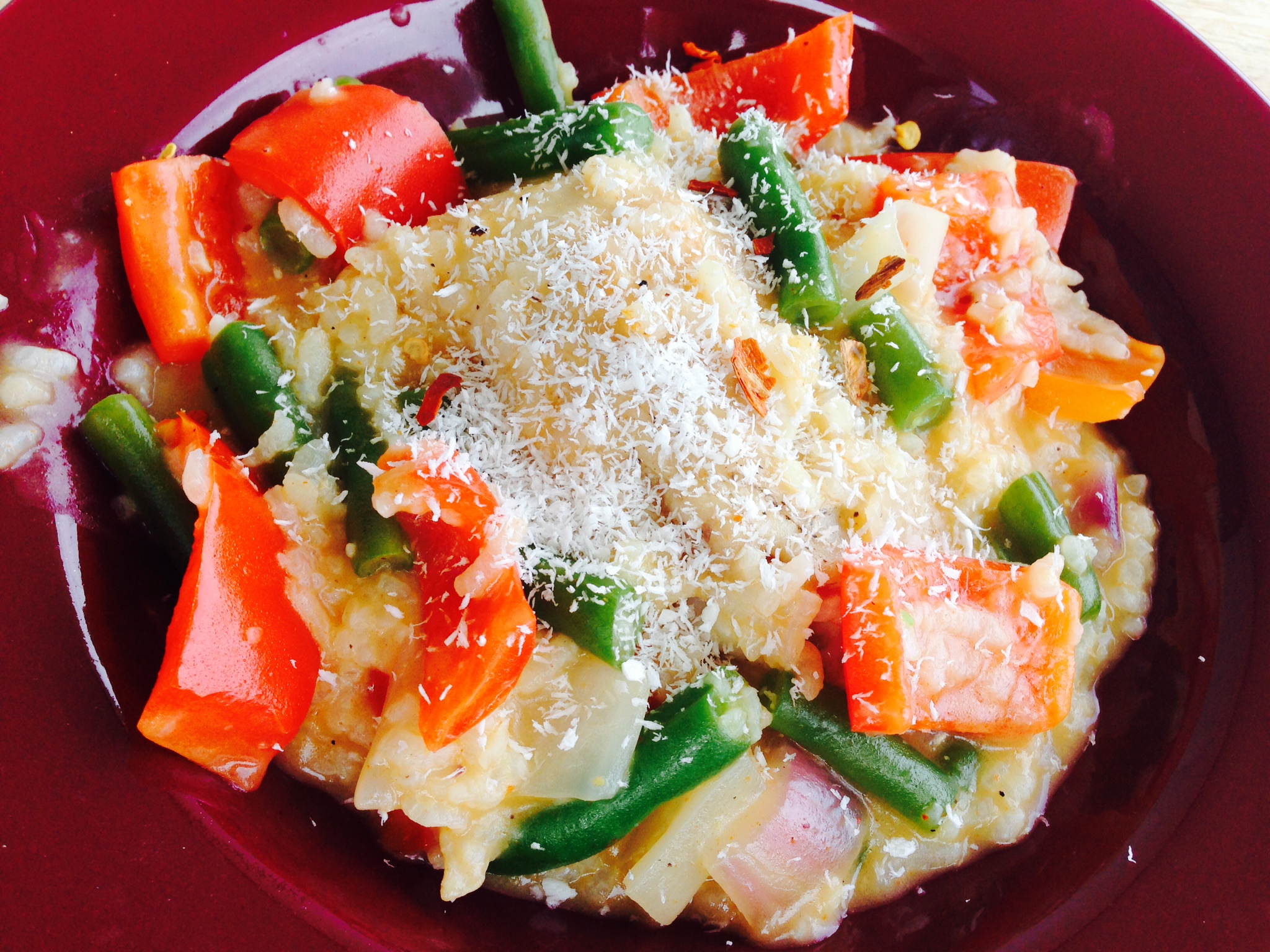We came home from vacation and my friend who had been dog sitting had left two persimmons on the counter. I looked at the beautiful orange fruit as a gift and a sign to prepare my next meal with a new food. I’m sure I’ve eaten this fruit before, but my memory could not bring up the flavors so I pulled up some info on the characteristics and then looked into my favorite recipes to find a place for it.

Get out of the rut of eating the same foods over and over again. When you are at the grocery store make it a habit to try a new fruit, vegetable or grain every week. Maybe try something you recall disliking as a kid and see what you make of it now. Not feeling very experimental, start with a different brand of apple, or type of potato. Get to know your spice rack to change the flavors in a dish you make frequently.
Having just come back from vacation I wanted to incorporate the persimmon into a dish I was already familiar with. Try this experiment next time you pick up a new food at the grocery store. Substitute it for something common in one of your favorite dishes. Keep it simple.
I had been eating fish all week in Hawaii and still wanted to keep on that path so I took my recipe for pecan crusted chicken and substituted tilapia. I served this over a salad of baby spinach, pre-cooked red beets, avocado, and substituted persimmon for orange sections. To add some depth to the flavor and texture I added homemade purple cabbage sauerkraut (so easy to make and it can be kept in the refrigerator for 6 months) and homemade sprouts. Before trying this dish I had no idea what to do with persimmon and now I have a new seasonal fruit to look forward to eating in the fall.
Some tips if you want to try persimmon. The fruit is native to China and was later introduced to California. Check where your grocery store fruit came from and try for as local as possible as opposed to Asian imports. It’s harvested in the fall in California and typically available through December. One fruit is about 70 calories and is a good source of fiber. It has anti-infective, anti-inflammatory, and anti-hemorrhagic properties. The orange color it a tip that it is high in carotenoids, helping to prevent age related macular disease. One fruit provides 80% of daily requirement for vitamin C. It’s a good post workout food as it is fairly high in minerals like potassium, manganese, copper and phosphorus. There are two common varieties, the hachiya (more astringent) and the fuyu (more sweet) shown in my recipe. The hachiya variety has a shape similar to a plum tomato and requires more ripening if you want to experience a sweet taste.
Now that I know I like the fruit and understand it's texture and taste I'm going to try it in a Caprese Salad. Give this a try and tell me what you think. http://www.treehugger.com/easy-vegetarian-recipes/persimmon-caprese-salad.html





 Are you getting fat just thinking about the holidays?
Are you getting fat just thinking about the holidays?